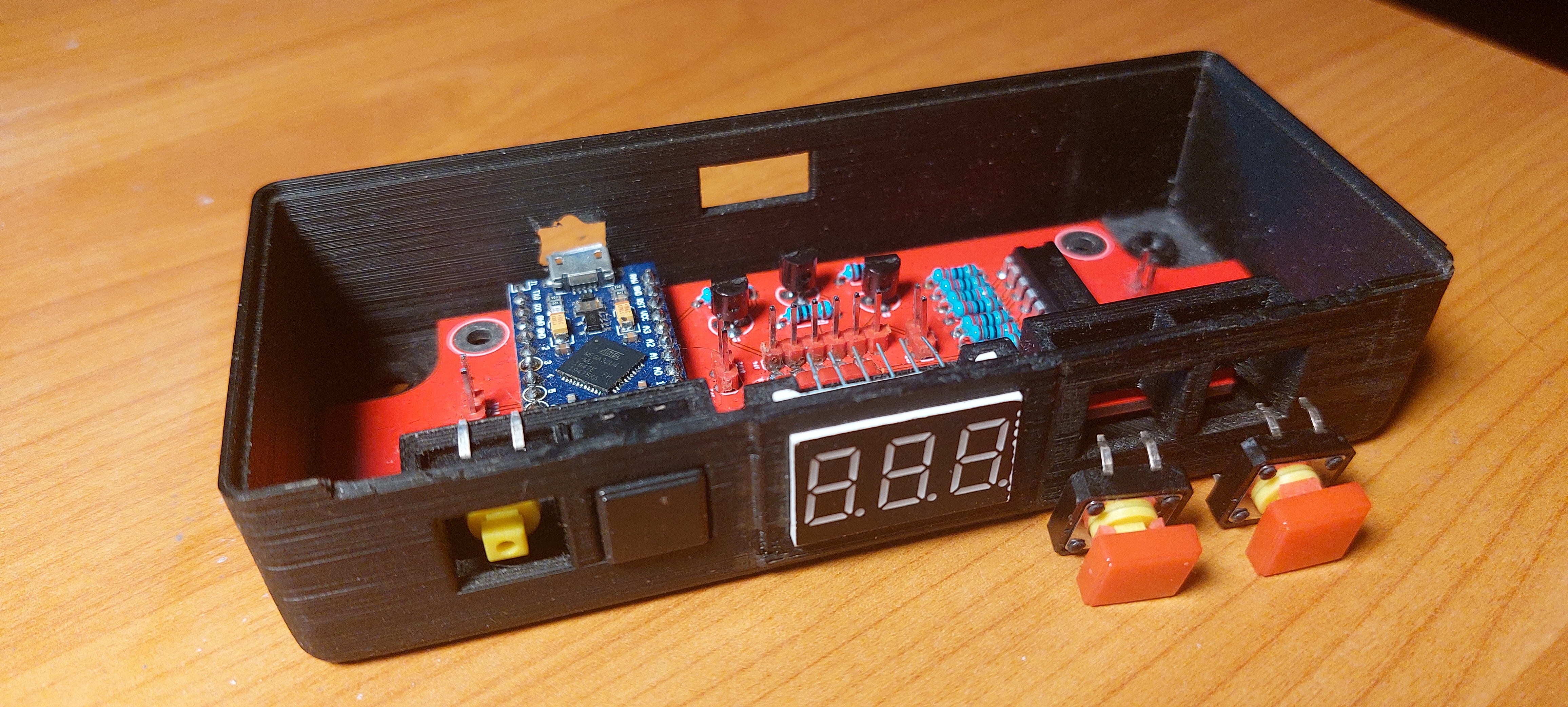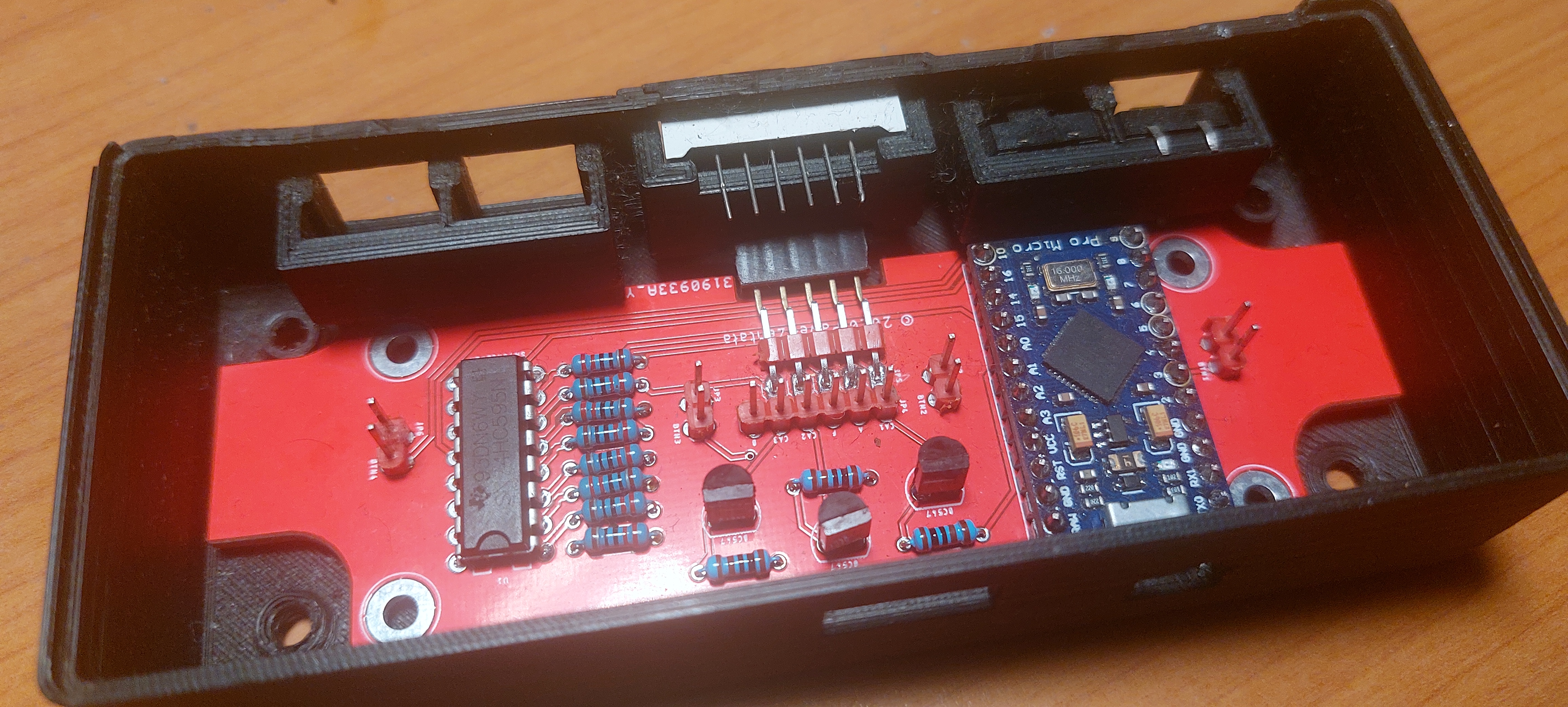-
Notifications
You must be signed in to change notification settings - Fork 0
Physical Control Panel v1
The Physical Control Panel (PCP) is an essential user interface component within the Smart Desk Solution Architecture. It plays a crucial role in enabling direct, tactile interaction between the user and the desk. The functionalities of the PCP include:
- Manual control for adjusting the desk's height.
- Interaction with the Smart Desk Server, enabling access to intelligent features that provide a seamless experience in activating user-specific desk settings.
This module, while functioning as a standard interface, holds potential for future enhancements based on user experience research and design innovation. It currently features basic control buttons like "UP", "DOWN", "MEM1", "MEM2", and includes a LED digit screen for displaying the current desk height.
The PCP is designed to communicate with the Smart Desk Server, providing input from the user and receiving commands for real-time adjustments. This interaction enhances the desk's responsiveness to user needs while maintaining the option for manual control. The module's integration with the Smart Desk ecosystem allows for potential future development, such as incorporating gamification elements or health-oriented reminders.
Functionality and Integration
- Manual Control: Buttons for immediate height adjustments.
- LED Display: Real-time height display for user convenience.
- Server Communication: Sends user inputs to the Smart Desk Server and receives commands for desk adjustments.
- Modular Design: Ensures compatibility with current and future modules of the Smart Desk system.
- User-Centric: Designed for intuitive use, with potential for adaptive features based on user feedback and ergonomic research.
This component was never fully completed. The primary issue was that the elements didn't fit within the enclosure; there was not enough space to properly connect the LCD and buttons. The PCB and 3D printed enclosure both require remodeling due to insufficient space for cabling.
In a redesigned approach, the focus would be on separating the Physical Control Panel (PCP) into two main components – the central board and the front panel. Additionally, optional components like a battery with a charger, sensors (e.g., vibration sensors to detect active user engagement), and action elements (such as a phone-like vibrator or buzzer for seamless physical communication with the user) would be integrated.
The high level of interchangeability in the PCP's design is a significant advantage for various stakeholders:
- Enables customization and experimentation.
- Facilitates the creation of unique, user-specific modifications or enhancements.
- Allows offering of customized solutions in line with their brand philosophy.
- Similar to Android's versatility among different smartphone brands, it provides flexibility in product design and features.
In conclusion, the modular approach of the Smart Desk system will benefit all parties involved by fostering a surge in creative solutions, improving user interface designs, and popularizing the concept of smart desks. This adaptability ensures that the Smart Desk remains at the forefront of ergonomic and interactive furniture design.
This component acts as the brain of the Physical Control Panel (PCP), offering a range of hardware configurations to cater to different needs and preferences.
-
Connectivity Options:
- Ethernet
- Bluetooth Low Energy (BLE)
- USB
- WiFi
-
Power Supply Options:
- USB
- Ethernet with Power over Ethernet (PoE)
- Battery
- The component will have universal connectors for:
- Attaching various front panels.
- Connecting multiple optional sensors (e.g., vibration, light).
- Integrating action components (e.g., buzzers, vibration elements like in phones, LED lighting).
This design approach makes the component a cost-effective and modular central unit for the PCP.
- Configuration Flexibility: The component allows for loading different configurations for front panels, sensors, and executable elements.
- Sensor and Light Management: Customizable settings for connected sensors and lighting.
- Communication with the Server: Facilitates transparent communication with the server, which only needs to be aware of the capabilities (what can be executed) and receive events (actions performed, battery alerts).
The PCP's high level of interchangeability is beneficial for desk manufacturers, allowing them to offer customized solutions aligned with their philosophy, similar to how Android is used by different smartphone manufacturers. This modularity is invaluable for R&D and understanding how we interact with and use furniture, determining our communication preferences and limits with such devices.
- The central unit, with various power supply and connectivity options, serves as the mainboard.
- Standardized connectors for front panels, sensors, and action elements highlight the separation of components, enabling the assembly of comprehensive setups.
- An optional component includes a battery with a charger.
This structure offers numerous variations and possibilities for development and experimentation. Both DIY enthusiasts and manufacturers can create their own combinations, including modifications to the panel, further advancing the industry, testing, refining solutions, and potentially popularizing smart desks.
The PCP Front Panel is a PCB equipped with buttons, LED digits, and other physical interface elements. It functions as a passive yet essential interface component of the Physical Control Panel (PCP), designed specifically to facilitate user interactions. This panel allows for direct control over various functionalities of the Smart Desk, such as height adjustments and activation of smart features, through its tactile interface. Its user-friendly design ensures ease of use and an intuitive interaction experience.
- Input Reception: The primary role of the Front Panel PCB is to receive input from the user through various buttons.
- Display Information: It is equipped to display relevant information, such as current settings or statuses, on an LED screen.
- Simplicity in Design: The Front Panel PCB is crafted for ease of use, with a focus on straightforward interaction. It does not incorporate complex processing capabilities.
- User-Friendly Interface: The design prioritizes intuitive usage, ensuring that the user can easily operate the Smart Desk without a steep learning curve.
- Connection to ESP32 Unit: The Front Panel PCB is designed to connect seamlessly with the secondary ESP32 component. This connection is pivotal for transmitting user inputs to the central processing unit.
- Modularity: The panel's design aligns with the overall modular nature of the PCP, allowing for easy integration or upgrades as part of the larger system.
- Upgrade Compatibility: While the current design is focused on basic input and display functionalities, the Front Panel PCB is built with the potential for future enhancements and additional features, based on evolving user needs and technological advancements.
This Front Panel PCB, as a key interface element, complements the more advanced secondary component with ESP32, together forming a comprehensive and user-friendly control system for the Smart Desk.
- ATMega / ATTiny as microcontroller that will send and receive commands from RPi via USB-UART
- shft register to handle 7-segment display, that would show some simple messages (eg. err) and current height
- 4 buttons:
UP,DOWN,MEM 1&MEM 2 - buzzer (not on the photo) for subtle user notfications

